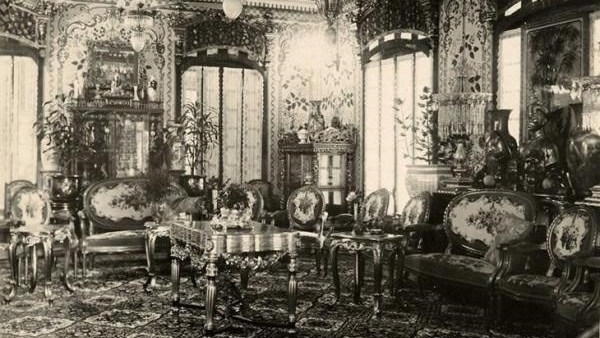
Hue city, the central province of Thua Thien-Hue, has announced plans to restore a palace in the former royal citadel in an attempt to give visitors a glimpse at how the former kings of the Nguyen Dynasty (1802-1945) lived.

The hall where King Bao Dai met the Japanese ambassador in 1945. (Photo: aavh.org).
The
People’s Committee of Thua Thien-Hue province recently approved funding of
VND123 billion (US$5.2 million) for the restoration of Kien Trung Palace inside
the dynasty’s imperial city.
It will be the first restoration project to
take place at the palace since it was destroyed in 1947 during the war. The Hue
Monuments Conservation Centre will oversee the project.
The centre’s director Phan Thanh Hai said a
plan had been drawn up using old images of the palace.
Starting later this year, the restoration project
will cover two storeys with three stone stairways carved with dragon designs as
well as a dragon embossment on the rooftop. The project is scheduled for
completion in 2020.
In the imperial city, Kien Trung Palace stood
behind the Thai Hoa Palace, which served as the main meeting hall for kings and
their mandarins.
The palace was the home of the dynasty’s last
kings, Khai Dinh and Bao Dai.
The palace was built in a mixture of French,
Italian Renaissance and old Vietnamese architectural styles by King Khai Dinh
in 1923. Earlier at the site, there was a pavilion built by King Minh Mang and
later repaired by King Tu Duc and King Duy Tan.
King Khai Dinh drew his last breath at the
palace in 1925. His son, King Bao Dai, lived in it with his first queen Nam Phuong.
Five of their children were born there, including two princes and three
princesses.
In March 1945, King Bao Dai met the Japanese
ambassador at the palace to announce Vietnam’s independence from French
colonialism.
Source: NDO
A diverse chain of eco-tourism and resort destinations concentrated in Hoa Binh city and the districts of Tan Lac, Da Bac, and Luong Son… Along with the launch of several key high-quality resort tourism projects, these developments have reshaped the landscape and enhanced the appeal of Hoa Binh as a travel destination.
Boasting diverse terrain, a mild climate, and rich natural resources, Cao Phong district is increasingly asserting its place on Vietnam’s tourism map, attracting both domestic and foreign visitors. The district is renowned for its stunning landscapes, majestic mountains, a crystal-clear hydropower lake, and the unique cultural identity of local ethnic groups.
With its pristine landscapes, unique cultural heritage of Muong ethnic minority, and an expanding range of visitor experiences, Tan Lac district of Hoa Binh has fast become a captivating destination for both domestic and international tourists.
Until now, Sung village in Cao Son commune, Da Bac district remains the only Dao ethnic community in Hoa Binh province to develop a community-based tourism model. Beyond its untouched natural landscapes, cultural identity serves as the cornerstone attraction for visitors.
Alongside the diverse cultural identities of the Kinh, Muong, Tay, Thai, Dao, and Mong ethnic people, Hoa Binh province is also renowned as the "capital" of the northwestern Vietnamese cuisine, offering unique and distinctive dishes. At festivals, during Lunar New Year (Tet), or on significant family or community occasions, special dishes are prepared, leaving a lasting impression on visitors.
A Phong Linh (Yellow Tabebuia) flower garden in Thang village, Thach Yen commune, Cao Phong district is currently in full bloom, drawing a large number of visitors.



